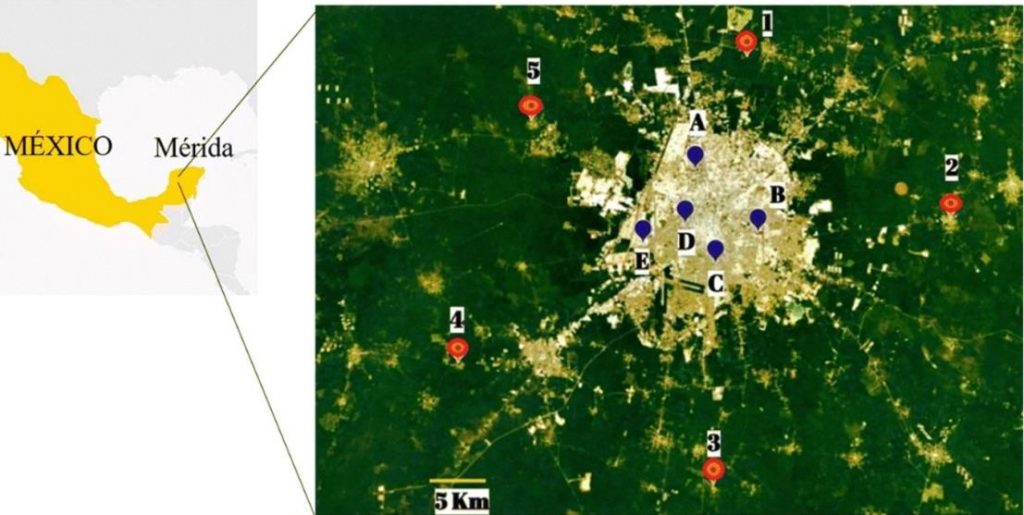Native bees in cities in developed countries harbour a rich diversity and abundance of bees. In Australia, for example, the stingless bee Tetragonula carbonaria thrives in urban areas which are rich in floral resources (Kaluza et al 2018). In less industrialized tropical countries, in contrast, stressful conditions may exist in cities for bees because of the lack of resources such as amenity green spaces (flowers) and appropriate nesting sites.
Researchers from Mexico and Germany collaborated to compare the performance of colonies of a native stingless bee species in the City of Merida, compared to colonies in surrounding rural sites. They choose a stingless bee species that is widespread in urban areas (Nannotrigona perilampoides), which nests not only in trees but also in crevices of buildings.
They collected adult bees from five male congregations in the city and from another five male congregations in agricultural areas around the city. They compared their body size as an indicator of nutrition. Adult bees from areas with poor food resources are known to smaller as a result of poor nutrition as larvae. As predicted, the bees in the city were significantly smaller.
They also looked at the proportion of the bees that were diploid males which is a measure of inbreeding. They thought that the urban bees might suffer from inbreeding because of habitat loss. Indeed, the diploid males were more common in the cities.
This study shows that in the tropical developing countries, the urban environment is not a haven for bees especially stingless bees with their perennial colonies. Care is needed before recommending stingless bees for urban meliponiculture.
Citations: de Jesús May-Itzá, et al. (2021). Stingless bees in urban areas: low body size and high frequency of diploid males at mating congregations of Nannotrigona perilampoides (Hymenoptera: Meliponini) in Mérida, Yucatán, México. Apidologie 52, 755–766 https://doi.org/10.1007/s13592-021-00862-w
Kaluza, et al. (2018) Social bees are fitter in more bio-diverse environments. Scientific Reports 8: 12353, https://www.nature.com/articles/s41598-018-30126-0
Map of the city of Merida, in the Yucatan Peninsula, Mexico, with the locations in which mating congregations of males of Nannotrigona perilampoides were sampled; in red with numbers, the five rural sites; in blue with letters, the five urban sites

